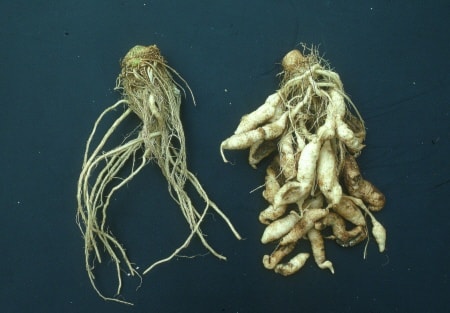With a mild winter and the beginnings of spring on the horizon, how planting season starts will depend on how wet or dry the land becomes.
Shayne Steffen, Ponoka County manager of agricultural services, says if central Alberta sees a dry spring this year, farmers will be able to get out to their fields earlier, possible giving them a boost in the fight against crop diseases.
“For example, clubroot spores will move throughout the field in water and move best in saturated fields where the spores can move throughout the soil profile and find the roots of the Canola plants,” said Steffen.
Dry land will help minimize the movement of clubroot, and reduce the chances of a severe infection.
“Virulent blackleg of canola is making a return to canola fields throughout the province so producers need to be vigilant and scout for this disease,” said Steffen.
Ponoka County will be scouting fields for clubroot and virulent blackleg this year. If found, there will be a probation for growing canola in that area and a directive for seed taken off the field and sold for crush, says Steffen.
It is not only crop diseases farmers need to look out for, as many varieties of weeds can also cause issues with the land. In pastures, it is the dry weather that allows them to take hold, especially if the pasture is heavily grazed.
“Weeds in cropping situations typically are controlled through pre-plant and in crop herbicides,” said Steffen.
“Canada thistle, absinthe wormwood and toadflax are some of the more invasive pasture weeds that can be controlled with spot treatment. These weeds are also considered noxious in Ponoka County,” he added.
Absinthe wormwood had its status raised to noxious in Ponoka County a few years ago. Steffen says now that farmers have had time to buy into the idea, the county is going to start cracking down on where it is found.
“There are a myriad of seed treatments and fungicides for different crops and these may assist in controlling seed pests, disease and fungal infections; it all depends on the crop seeded and the pest or disease issue,” said Steffen.
At the time, there is no economical treatment for clubroot and Steffen suggests when farmers plant their crops, they choose the clubroot resistant variety and maintain a minimum one-in-four-year crop rotation.
Farmers also need to be aware of the animal pests that can damage crops.
If the season is hot and dry, there is a possibility of grasshoppers being an issue, as they are on an upward population trend.
“Gophers were not a problem last year and although there may be a few areas with some RGS issues, most areas should see low to moderate populations,” said Steffen.
Gophers can be combated with strychnine. However, the raw product comes from India and there is almost none available in the province, currently.
Ponoka County has none available for farmers and Steffen says the stocking the product was becoming financially inefficient due to low demand.
